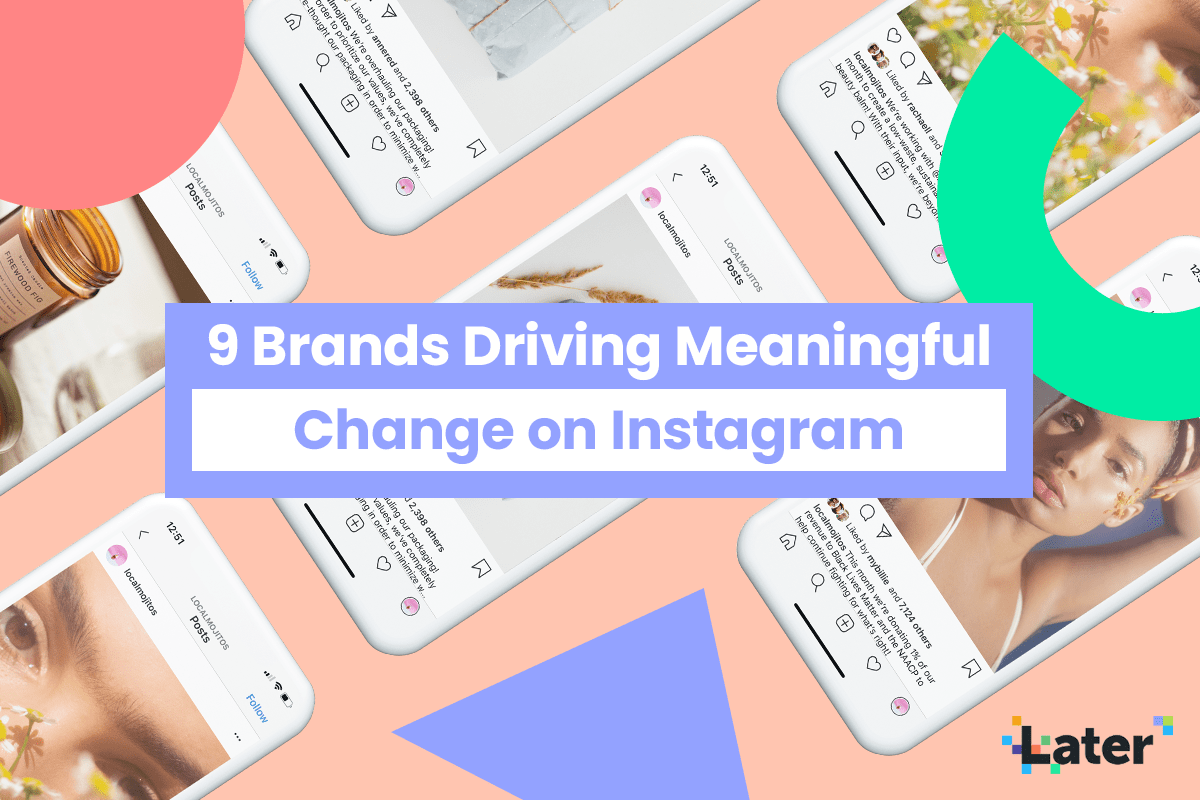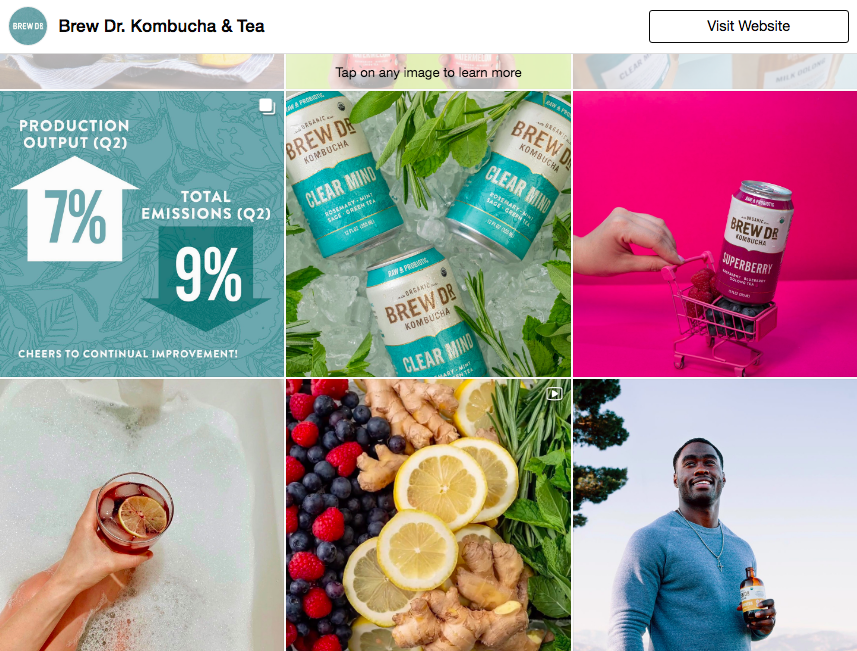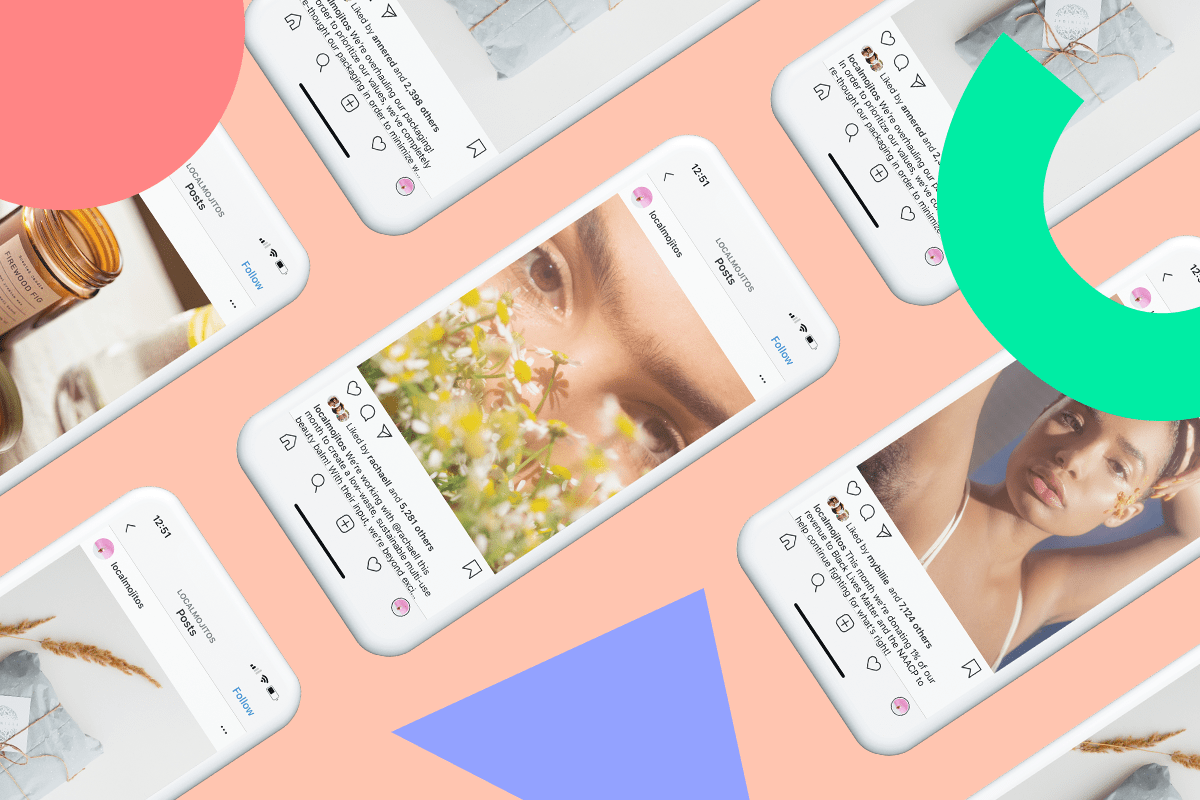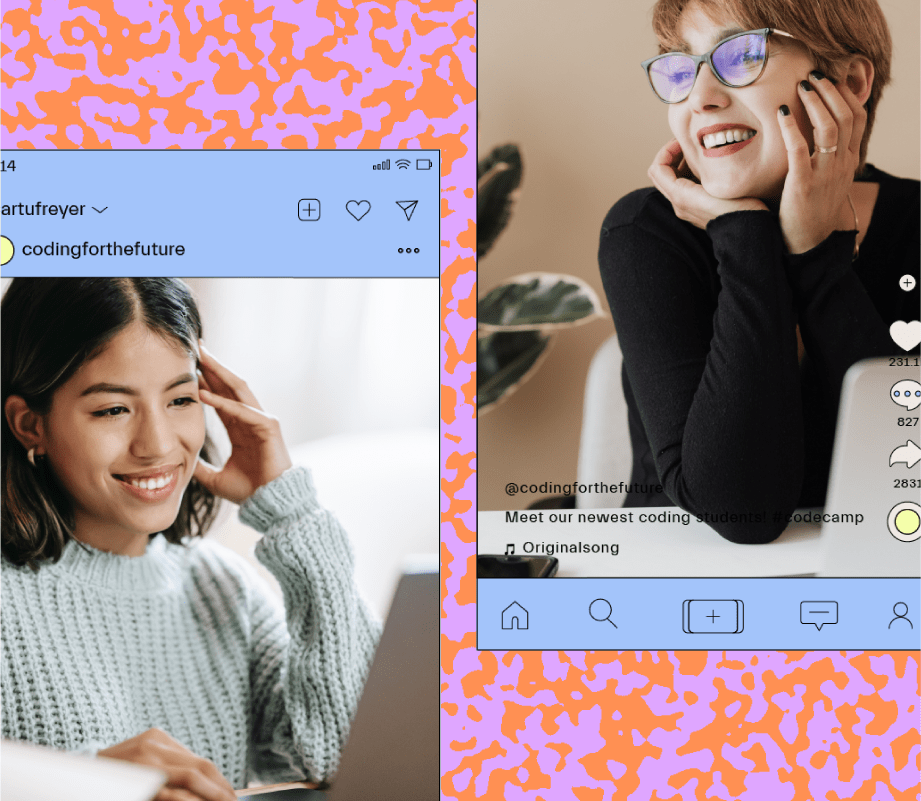We’ll let you in on a little secret: we love brands with purpose.
And we’re not alone. Given similar price and quality, 91% of consumers are likely to switch to a brand that supports a good cause.
Whether it’s creating sustainable skincare or empowering the LGBTQ+ community — brands with purpose are able to sell their products and support causes they care about.
In this blog post, we’ll spotlight 9 mission-focused brands, how they use Instagram to help drive meaningful change, and what you can learn from them:

Why Brands Should Support Social Causes on Social Media
It’s not enough to simply sell a product or service anymore — 74% of consumers expect brands to take a stand on important issues.
But it bodes well to go beyond charitable donations and incorporate purpose into your brand’s overall vision and mission.
And social media is a great way to share that mission with your community. Supporting a cause on social media helps humanize your brand and increase brand loyalty.
By aligning with your audience’s values, they’ll become advocates of your business and recommend your products to family and friends.
Brands with purpose also see a boost internally — a study in 2018 found that thriving employees are 3x more likely to work for a company with a strong sense of purpose.
Employees and consumers alike will be inspired by your mission and feel better supporting a business that is making a positive impact rather than one solely focused on making money.
These 9 brands do more than simply sell their products, and use Instagram to drive meaningful change:
Brands with Purpose #1: Brew Dr. Kombucha
Brew Dr. Kombucha is not your average kombucha company. As the first national kombucha company to become a Certified B Corporation, sustainability is at the core of what they do.
Their Instagram feed is full of colorful backgrounds and fun shots of their beverages, along with graphics that speak to their purpose.
Brew Dr. also frequently uses Later’s Linkin.Bio feature to share their various flavors and sustainability efforts.
And instead of solely driving traffic to one link, they’re able to send visitors to various pieces of content.

Brew Dr.‘s Linkin.Bio page. Each photo drives followers to a different link.
The end result? Brew Dr.’s audience will come to associate their Instagram with a place to get fun mocktail recipes and learn more about intersectional environmentalism. It’s a win-win.
As their Digital Brand Manager shares, “It’s a unique, fun challenge to find the balance between talking about serious issues like sustainability and social justice versus always talking about our flavors.”
Want to learn more about Brew Dr.’s strategy and how they plan social content? Read our latest case study about this mission-focused brand.
Brands with Purpose #2: Hanahana Beauty
Hanahana Beauty is on a mission to empower Black women globally. As a skincare and wellness brand, its mission coincides with handcrafting natural skincare products.
One look at their Instagram feed, and you’ll see a mix of lifestyle images, quotes, and product shots. From its cohesive aesthetic to captions about self-love and self-care, Hanahana Beauty’s community is its greatest strength.
Alongside posts about wellness, Hanahana Beauty also shares stories and updates on The Hanahana Circle of Care — an initiative created to directly support the women they work with in Ghana.
Using Instagram to frequently remind their audience about the initiative is a great way to drive sales and increase brand loyalty — especially when 100% of proceeds occasionally go directly to the Circle of Care.
When new followers stumble upon their feed, they’ll know exactly what Hanahana Beauty stands for, who they support, and that purchasing their skincare products also helps women across the globe.
Brands with Purpose #3: Phenomenal
Looking for a lifestyle brand with a strong stance on social issues? Phenomenal is perfect for you.
The brand creates shareable content on Instagram — like graphics, quotes, screenshots of tweets — that reflect their position on topics including mental health, healthcare, racism, and homophobia.
By using simple templates of quotes and phrases, Phenomenal is able to increase engagement — people are more likely to comment, like, save, and share this type of content. It allows Phenomenal to reach more eyes and raise awareness about the causes they support.
When showcasing their products, Phenomenal uses longer captions to educate their audience and reiterate their stance.
Their products reflect their feed, and it should come as no surprise that Phenomenal t-shirts include statements advocating for communities and causes they support.
TIP: To get more eyes on your social cause posts, create eye-catching graphics or doodles for your grid. These super-shareable posts can help increase your brand’s reach and engagement.
Brands with Purpose #4: Brightland
According to Brightland’s founder, Aishwarya Iyer, “Brightland was born out of a desire for better, more honest food production — and a deep belief in the land and what it provides.”
Brightland illustrates this on Instagram via captions and imagery which encourages their community to savor simple moments and nourish their body with locally sourced ingredients.
They also frequently use carousel posts to raise awareness about intersectional environmentalism and sustainability.
Carousel posts are a creative way to educate your audience, and highlight causes you care about.
Another way Brightland uses carousel posts?
To share recipes of nourishing meals, featuring locally-sourced ingredients.
By incorporating their products into the recipes, they’re able to subtly sell their olive oils and vinegars, while reinforcing their idea of “living in the golden state,” aka savouring the simple moments.
With frequent recipe-sharing, they’ll become a go-to source for healthy and simple dishes, while growing a community who cares about (and supports) sustainable causes.
TIP: Plan and schedule your carousel posts with Later! Once it’s in your content calendar, we’ll send you a reminder when it’s time to post.
Brands with Purpose #5: Boy Smells
Boy Smells sells candles and intimate wear, and according to their founders, “wanted to have products that were embracing masculine and feminine simultaneously in a simple and straightforward way that wasn’t overtly targeted to one gender.”
Their mission is taken a step further through their monetary support for organizations like The Trevor Project. Throughout the month of July, Boy Smells donated 15% of proceeds from their PRIDE Collection to the non-profit.
If your audience can relate to or empathize with your mission, they’ll become advocates for the social causes you’re passionate about and show their support with their wallets.
When it comes to launching or re-releasing a product, you could also take a cue from Boy Smells and drive traffic to your blog.
With their PRIDE collection, Boy Smells featured interviews and photoshoots of influential people in the LGBTQIA+ community. They used Instagram as a teaser — increasing interest in the long-form content and candles.
Want to learn more about marketing and creating content in a post-binary world? Listen to Matthew Herman, co-founder of Boy Smells in our LaterCon replay.
Brands with Purpose #6: Nolaskinsentials
“My desire for clear skin and my love for our environment became a core focus when creating Nolaskinsentials,” says Jane Ormon, the company’s founder.
As a vegan skincare company for millennials, with biodegradable and recyclable packaging, Nolaskinsentials frequently shares fun boomerangs and behind-the-scenes photos on Instagram to back up their claims.
They take the behind-the-scenes content a step further and use Instagram Stories. Multiple employees — from the founder to the office manager — film videos answering FAQs and showing the inventory, order, and shipment process.

Getting a glimpse into their day-to-day operations humanizes their brand and connects them with their audience.
We’re also able to see that the brand is run primarily by millennials (their core audience) — becoming a source of inspiration for those who want to start and grow an environmentally-friendly business.
Brands with Purpose #7: Youswim
Youswim has taken Instagram feeds by storm with shots of women wearing their ethically-made swimsuits. Designed to represent women realistically and accept their ever-changing bodies, Youswim prides itself on not having sizes.
Instead, their swimsuits take a one size fits all approach: “If you’re usually a US 2-14, these will fit you.” It’s the Sisterhood of the Traveling Pants for swimwear.
Advocating for self-love and body positivity, Youswim relies heavily on user-generated content (UGC) to sell their products and mission. Their Instagram feed is full of real-life customers wearing swimsuits at the beach or lounging at home.
UGC is a great marketing strategy for small businesses who may not have a large budget to collaborate with influencers.
Instead, Youswim is able to leverage organic posts, build a loyal community, and create a safe space for women to talk about and show their bodies, free of judgement.
Brands with Purpose #8: Collective Arts Brewing
Since 2013, Later user Collective Arts Brewing has published the work of over 2000 artists on their product labels. In doing so, they’re able to sell their alcohol while using their platform to amplify the work of artists around the world.
And the next stage of that mission? To increase diversity and support marginalized communities.
2020 has seen a rise in brands taking accountability and sharing their plans to be more inclusive, and Collective Arts Brewing’s Amplify Voices initiative can help drive change:
Collective Arts Brewing also supports the creative community with its “Open Studio” IGTV series. In each episode, an artist or musician takes viewers into their workspace or studio and shares how it’s a source of inspiration.
It makes their Instagram feed fun to follow. You can watch short episodes, meet artists in other corners of the world, and become a new fan — especially if they’ve designed a label for Collective Arts Brewing.
The limited-edition works of art on their beer cans and labels creates exclusivity, increases brand loyalty, and helps drive traffic to their site.
Brands with Purpose #9: Cheekbone Beauty
Cheekbone Beauty is on a mission to build a more sustainable world, while empowering Indigenous communities.
And they’re doing it while selling lipstick, lip gloss, and eyebrow products.
Cheekbone Beauty uses authenticity and long-form captions to talk about key learnings many small businesses encounter, like product ideation or working with influencers:
Their transparency makes them relatable, and strengthens their community — we feel like we’re growing with them and want to show support by buying their products.
Cheekbone Beauty’s passion for creating a space in the beauty industry where Indigenous youth feel represented is also reflected in their content.
When launching their SUSTAIN collection, their captions featured short lessons about Indigenous culture. For example, the shade called Aki is the Anishinaabe or Ojibwe language word for land or earth.
Using captions as a form of storytelling allows Cheekbone Beauty to educate their audience, share their mission, and connect with their community.
Brands with purpose are able to sell their products while supporting causes they’re passionate about. They use Instagram as a tool to raise awareness, make connections, and drive meaningful change.
Who are some of your favorite mission-focused brands? Let us know — we love chatting with you on Later’s Instagram account.
Save time by publishing posts with Later’s scheduling tools! Easily plan your posts in advance, tailor your captions, and customize your photos to suit each social network.


